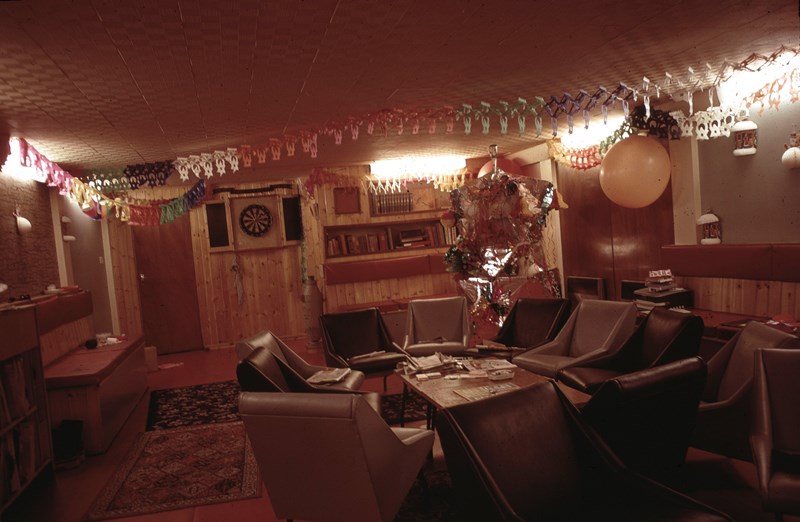I was encouraged by the recent discussion of JATO bottles at Halley II [in Z-Fids Newsletter No. 35]
to look through some old slides and found a couple that may be of general interest
although I am sure that the SLR-equipped photographers of my generation have much better examples.
The first, taken in 1969, shows 7 bottles and a box of fuses on the outside dumps.
The 8th bottle was already mounted as an ashtray at the entrance to the library from the
lounge where Mick Dixon found it in 1984.
I understood that the bottles had been offloaded from the US C130 Hercules which
evacuated John Brotherhood and which was fitted with mounting points for a
total of 8 bottles (four each side of the fuselage). Possibly the bottles were left at Halley
to save weight (and drag) on what was very much a pioneering trans-continental flight.
However it should be noted that in the late 60s the US aircrews were often in the Antarctic
to get some light relief from duties in the Vietnam war and few had the same regard
for flight safety as your average Easyjet crew today.
When subsequent visiting C130 aircraft crews showed no interest in retrieving their rockets,
FIDS of the era inevitably had all sorts of suggestions as to how JATO bottles might be
adapted to make a form of rapid transport but thankfully nobody went far enough to get themselves
on the shortlist for a Darwin Award. During one such visit a pilot explained in some detail
that (very expensive) JATO was only useful for take-off at high altitude -
you can't fire the jets until you have raised the front ski and, at sea level,
if you can unstick the front ski you can get a Herc airbourne without extra assistance.
(This discussion took place in the aforementioned lounge and continued for several hours of
'crew-rest' while the base beer supply got somewhat depleted.)
Consequently it was with some surprise that we heard on their departure the order
to mount their JATOs (not 'ours'!). The aircraft (with a FID-modified registration number)
taxied some distance away from base and then turned towards us for take-off. Within a
few seconds of full thrust the nose ski was high in the air, but it was surfaced again
until the aircraft was close to the assembled photographers' gallery when it shot up again
and we were then treated to the spectacle of 8 JATOs firing at close quarters.
I'm afraid my photo does not do the experience full justice.
[14 Nov 2014]


